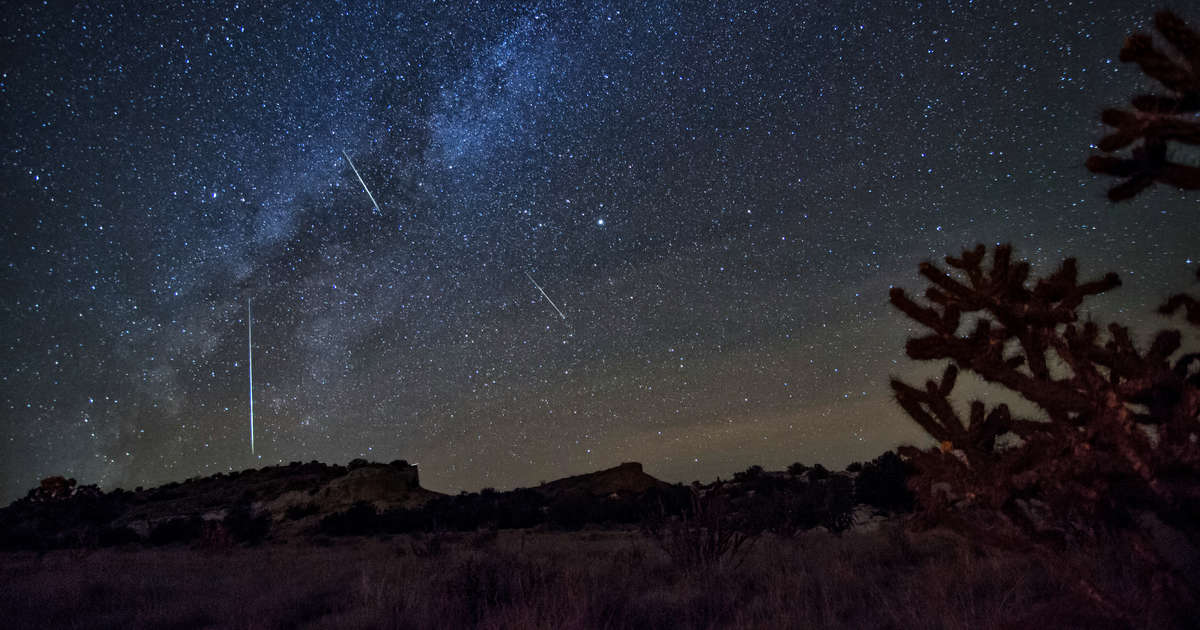
October will be a month rife with things to enjoy in the night sky. Three meteor showers will reach their peak this month, and two of those will take place this week. The Southern Taurids and the Draconids are going to peak on back-to-back nights.
The Draconid meteor shower will peak the night of October 8. Then, the Southern Taurid meteor shower will peak the night of October 9, providing great excuses to bask in some of the final beautiful falls nights we're going to get.
Recommended Video
How to see the Draconid meteor shower
This shower takes place when Earth crosses the orbit of Comet 21P/Giacobini-Zinner. The debris left behind by the comet crashes into Earth's atmosphere and burn up spectacularly to create the shower everyone is out enjoying. The shower will peak the night of October 8 into the following morning and is the unofficial kick-off of the fall meteor season.
The meteors for this shower will appear to radiate from the constellation Draco the dragon. Though it can be useful to find the radiant, that's not the point where you should look. Instead, watch just slightly away from the radiant, taking in as much of the night sky as possible. In part, that's because the meteors will be moving away from the radiant.
It'll also help to be looking at a space away from the night's waxing gibbous moon. Because the moon is so close to full, it has the potential to wash out many of the meteors. Most meteor showers tend to hit their apex after midnight, but the Draconids, which should produce around 5-10 meteors per hour, are one of the rare ones where the best time to see it is earlier in the evening.
Additionally, for either shower this week, you're going to want to be sure you've got clear skies in the forecast. Crappy weather is going to ruin your night. Not just because the weather will be, well, crappy, but because you won't be able to see the meteors. In Accuweather's most recent forecast for Wednesday night, it looks like visibility in the Upper Midwest is going to fall under the category of garbage. The West Coast, Southwest, Southeast, and parts of the eastern seaboard will have a great night for sky-gazing. The Northeast, also garbage. Check your local forecast, but Accuweather's map is embedded below.
— AccuWeatherAstronomy (@AccuAstronomy) October 9, 2019
How to the Southern Taurid meteor shower
The following night, you'll be watching the peak of the Southern Taurid meteor shower. Though, realistically, there's overlap. You'll probably see meteors from both showers on either night.
The moon will still wash out many of the meteors, but, as the American Meteor Society notes, the Southern Taurids tend to produce bright fireballs that can compete with the moon's vibrant light. Fireballs are exactly what they sound like. They're bright and far more noticeable than the average meteor. They make for a better show.
The Southern Taurids are expected to produce roughly the same number of meteors per hour as the Draconids. However, if you can't get out for either shower, fret not. The Orionids are coming later in the month and will put on a better show than either of these displays. You'll still have plenty to brag about to your coworkers who don't leave the house after dark.
Sign up here for our daily Thrillist email and subscribe here for our YouTube channel to get your fix of the best in food/drink/fun.
Dustin Nelson is a Senior Staff Writer at Thrillist. Follow him @dlukenelson.
